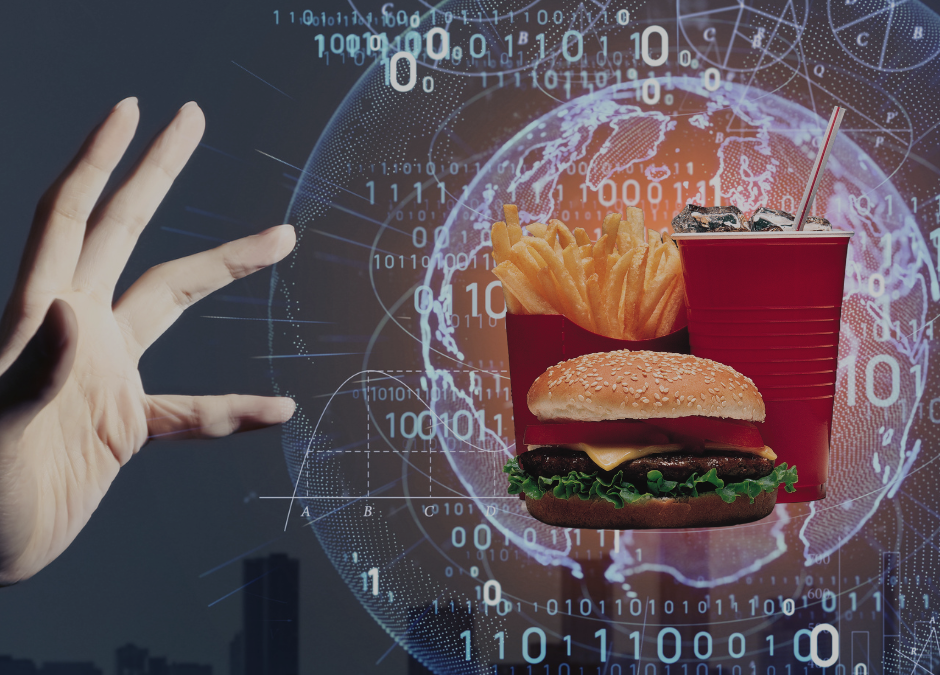When people think of A.I. in the food industry, it is understandable why some people’s imaginations immediately go to robot chefs. Especially considering that restaurants such as White Castle have experimented over the past few years with using robo-chefs such as the patty-flipping Flippy.
Let us not let our imaginations go to robots in imagining how A.I. can transform restaurants, then. We perhaps need to reign our imaginations in—or, rather, expand them by expanding our understanding of how A.I. can transform this industry in other, equally important ways.
There Is More A.I. for the Food and Beverage Industry Than Just Robots
To see how A.I. can transform the food and beverage industry, let us think up an example that can be applied to just about any restaurant, whether it is a greasy diner or a famed restaurant boasting the coveted three Michelin Stars.
Our example restaurant will be a family-friendly franchised Nickelodeon restaurant, where diners can order delectable meals and drinks that are thematically tied-in to classic and contemporary Nickelodeon children’s and teens programs.
To add a dash of fun to this example, let’s imagine that there is indeed a robo-chef in the kitchen in the form of an animatronic Spongebob Squarepants that, through machine learning capabilities, can whip up just about any kind of Krabby Patty imaginable.
The A.I. Powering Restaurants
Yes, the families at this establishment may look at the Spongebob and think, there is how artificial intelligence is transforming the restaurant experience right there.
Very good, but, as we have hinted above, there is more A.I. behind this restaurant’s success than robo-chefs. These diners remain unaware of the A.I. responsible for initially piquing their interest in the restaurant. How much of the restaurant experience, after all, hinges upon a peculiar ignorance of what remains unseen? Consider this: We don’t witness the food preparation, unless you’re at a Japanese Steakhouse, a fast food sandwich joint, or in the case of our animatronic chef example.
Below we will go into some A.I. examples of what the family at our example restaurant is not seeing.
Persona Modeling for Your Diners
One form of A.I. responsible for sparking diner interest is persona modeling, which identifies and analyzes existing customers through open data sources like public social media posts. The fruits of persona modeling’s analyses are “cognitive insights”.
These insights will give the franchisees an important understanding about what customers like and dislike. This is fairly wide-ranging, as it encompasses things as complex as political views to as comparatively simple as favorite color. (Would it surprise you if customers of our franchised Nickelodeon establishment had a particular fondness for the color orange?)
With this valuable information about your customer base, a persona modeling platform can then segment your customer base into different “personas”, so that you can see the variety of customers that are interested in dining at your establishment.
For instance, the persona model Nostalgia Nancy may be a single person in the age range of 25 to 35, who wishes to go to the restaurant because of a certain nostalgic appreciation for the entertaining cartoons that perhaps figured largely in this persona’s childhood cultural diet.
Another persona model will be Parent Pat, who wants to take the kids out to a restaurant that will be fun for the whole family.
These persona models can even include information such as who would be the biggest and most frequent spenders among the persona models, which can help you tailor your marketing strategy to attract those spenders.
Optimizing Your Food and Beverage Operations
Another use for A.I. in the restaurant industry is optimizing the use of raw materials, i.e., the food.
For instance, A.I. can analyze your processes and find ways to manage food waste and make the preparation of food much safer.
This way, you will not only be much more likely to get an A rating from health inspectors, but you will also be able to tell your customers that your restaurant implements sustainability practices.
It can also help map out more effective delivery routes for your drivers. In our example, let’s say our restaurant does deliveries in cars designed to look like the boats driven by characters in Spongebob. A.I. can find the best way for these boats-on-wheels to navigate traffic in real time, as well as in general by analyzing historical data from delivery routes. Pretty soon, those drivers will be making deliveries in record time.
More A.I. to Help Businesses in the Food and Beverage Industry
Interested in using A.I. to help your restaurant even more? Guardian Owl Digital can connect you with the best A.I. solutions available, from persona modeling to customer churn and more. GO AI today to transform your business.
GO AI Articles
Guardian Owl Digital is dedicated to helping businesses everywhere learn about and implement A.I.
For continuing your AI education and keeping up with the latest in the world of AI, check out our AI blog:
New Year, New AI: Here Are the Biggest Trends in AI Coming in 2023
How AI Could Have Helped Southwest Avoid Its Holiday Disaster
IBM Watson vs. Microsoft’s ChatGPT: The AI Chat Matchup of the Century
AI on the Stand: Explaining the Lawsuit Against the Microsoft Automated Coder
AI and You: What Determines Your AI Recommendations in 2023?
How AI Could Have Foreseen the Crypto Crash—(It Already Analyzes Exchange Markets)
Google’s Response to ChatGPT: What the Tech Giant Is Doing to Improve Its Own AI Efforts


Recent Comments